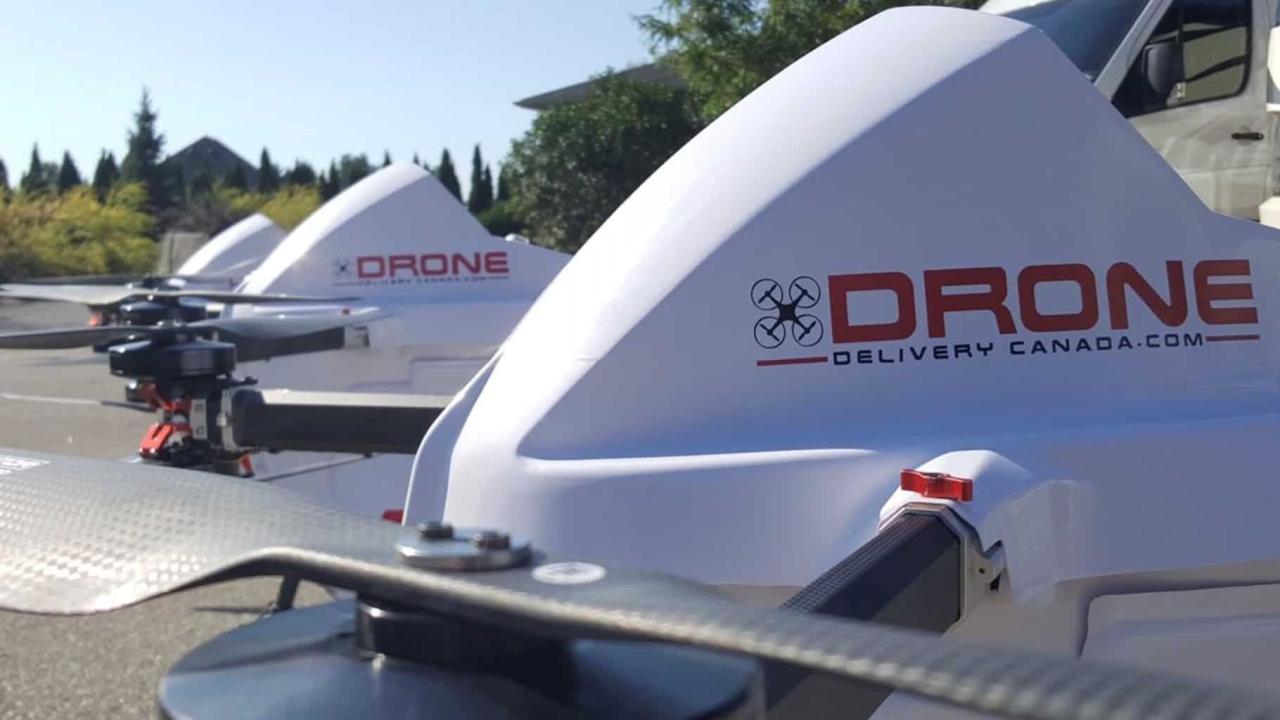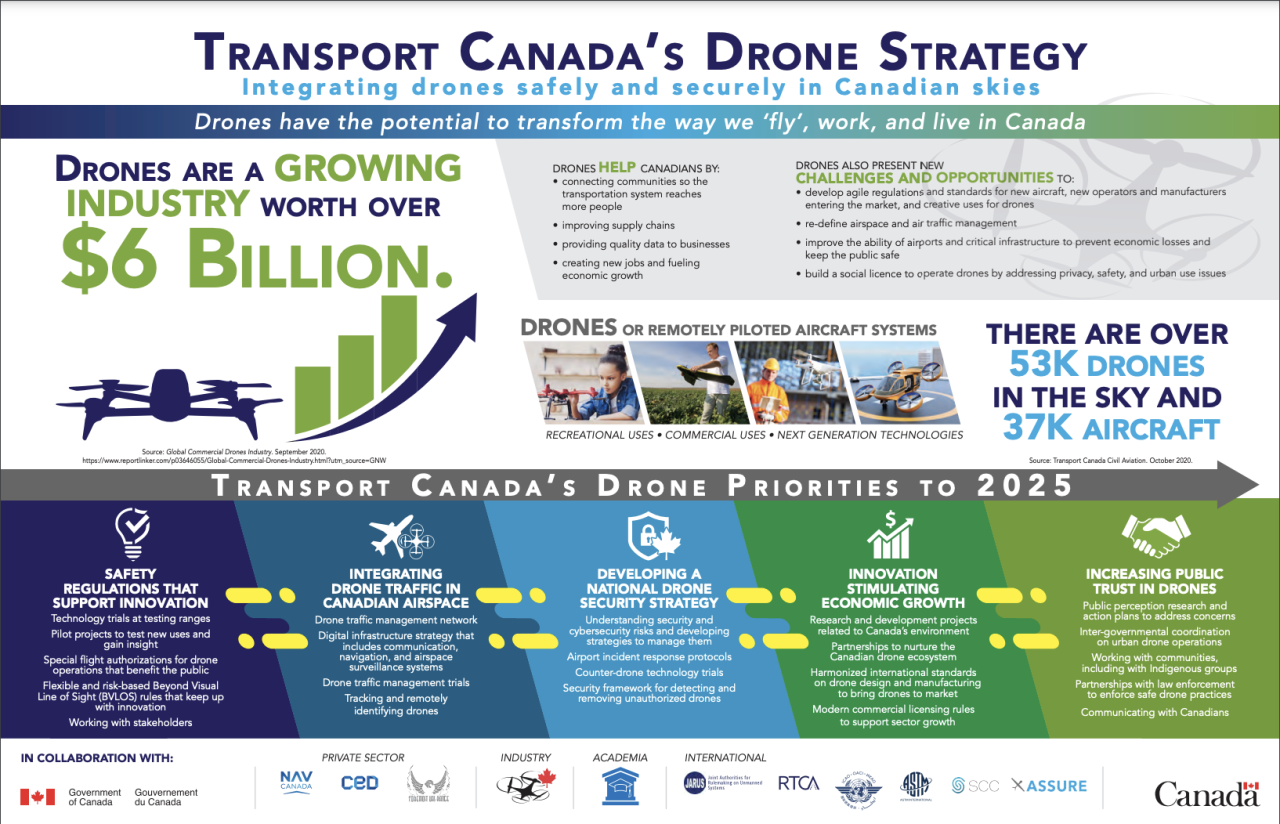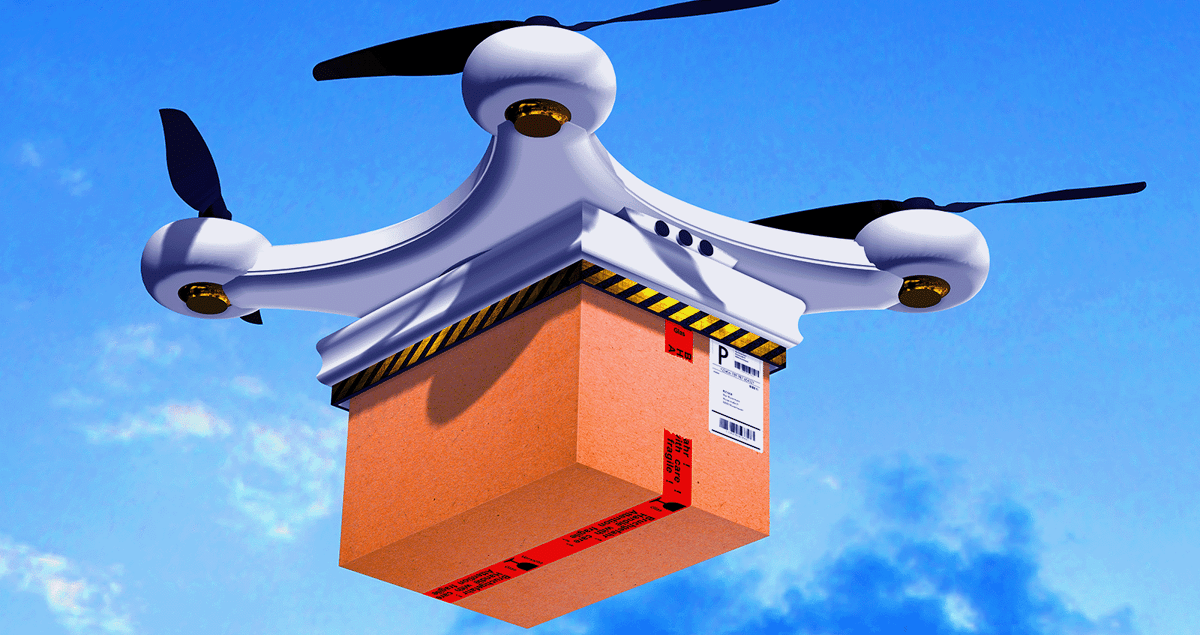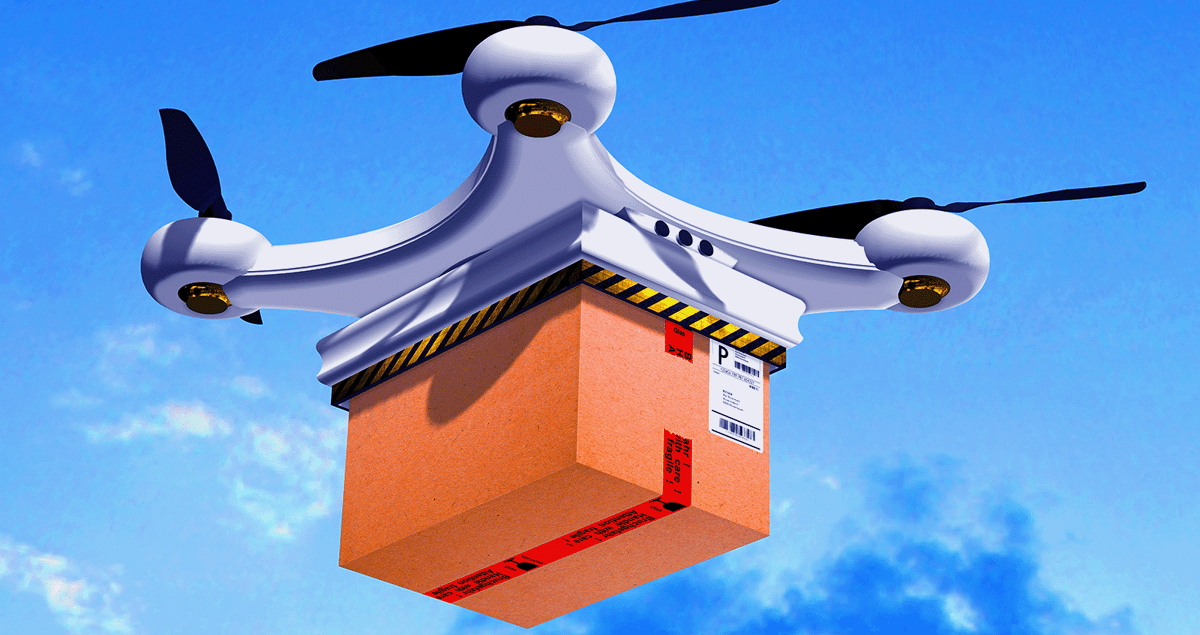Drone delivery Canada stock represents a fascinating investment opportunity within a rapidly evolving sector. This exploration delves into the key Canadian players, examining their business models, technological capabilities, and market positioning. We’ll also navigate the regulatory landscape, analyzing its impact and potential for future growth. Understanding the financial performance and investment risks associated with these companies is crucial for potential investors.
This analysis covers publicly traded Canadian companies involved in drone delivery, comparing their technologies, target markets, and financial performance. We’ll assess the potential market size and growth, considering factors like regulatory hurdles and geographic limitations. Finally, we’ll discuss technological advancements and their impact on the industry’s future.
Canadian Drone Delivery Companies: A Deep Dive
The Canadian drone delivery landscape is rapidly evolving, with several companies vying for a piece of the burgeoning market. Understanding the key players, their strategies, and the technological advancements driving this sector is crucial for investors and industry watchers alike. This section provides a comprehensive overview of publicly traded Canadian companies involved in drone delivery, comparing their business models, target markets, and technological capabilities.
Thinking about investing in drone delivery Canada stock? It’s a hot sector, but remember, understanding the tech is key. For example, the powerful computers needed to control these drones are often built by specialized companies, like those you can find on sites such as this pc builder resource. So, before you dive into drone delivery Canada stock, do your homework on the underlying technology; it’ll give you a much better perspective on the industry’s potential.
Publicly Traded Canadian Drone Delivery Companies
While the number of publicly traded companies solely focused on drone delivery in Canada is limited, several publicly traded companies are actively involved in drone technology and related services. Information below is for illustrative purposes and may not reflect real-time market data. Always conduct thorough due diligence before making any investment decisions.
| Company Name | Business Model | Target Market | Technology |
|---|---|---|---|
| Example Company A (Hypothetical) | Provides drone delivery services for e-commerce companies, focusing on last-mile delivery in urban areas. | E-commerce businesses, particularly those with smaller, lighter packages. | Utilizes a fleet of autonomous drones equipped with advanced GPS and obstacle avoidance systems. Employs proprietary software for route optimization and delivery management. |
| Example Company B (Hypothetical) | Develops and manufactures drone technology, selling both hardware and software solutions to other businesses. | Other drone delivery companies, logistics firms, and government agencies. | Specializes in long-range, heavy-lift drones capable of carrying larger payloads over extended distances. Focuses on developing robust drone control systems and secure data transmission protocols. |
Regulatory Landscape for Drone Delivery in Canada

The regulatory environment significantly impacts the growth and viability of the drone delivery industry in Canada. Understanding these regulations, their challenges, and potential changes is essential for assessing the risk and reward associated with investments in this sector.
Canadian Drone Delivery Regulations and Their Impact, Drone delivery canada stock

Transport Canada sets the regulations governing commercial drone operations. These regulations cover aspects such as pilot licensing, drone registration, airspace limitations, and operational safety standards. While these regulations aim to ensure safety and security, they also present challenges for drone delivery companies, such as limitations on flight ranges, operational hours, and payload capacity. Opportunities exist in advocating for regulatory changes that promote innovation and growth while maintaining safety standards.
A comparison with countries like the United States or Israel, known for their advanced drone technology and relatively less restrictive regulations, highlights the need for a balanced approach that fosters innovation while prioritizing safety.
Hypothetical Regulatory Change Impact
A hypothetical scenario: If Transport Canada were to relax restrictions on beyond-visual-line-of-sight (BVLOS) operations, Example Company A (from above) could significantly expand its delivery radius and service area, leading to increased revenue and market share. However, increased BVLOS operations would also necessitate substantial investments in advanced safety technologies and operational procedures to mitigate the risks associated with BVLOS flight.
Market Analysis of Drone Delivery in Canada: Drone Delivery Canada Stock
Assessing the market size, growth potential, and key factors influencing the adoption of drone delivery is crucial for understanding the investment landscape. This section provides a market analysis, considering various sectors and geographical factors.
Market Size and Growth Projections

The Canadian market for drone delivery is projected to experience substantial growth in the coming years, driven by factors such as increasing e-commerce adoption, advancements in drone technology, and the need for efficient last-mile delivery solutions. However, challenges such as infrastructure limitations and regulatory hurdles could potentially hinder this growth. Conservative estimates suggest a market size reaching [insert hypothetical market size] CAD by [insert hypothetical year], with a compound annual growth rate (CAGR) of [insert hypothetical CAGR]%.
This growth is expected to be driven primarily by the healthcare and e-commerce sectors.
Thinking about investing in the future of logistics? Drone delivery is booming, and if you’re interested in getting a piece of the action, you should definitely check out the potential of drone delivery Canada stock. Understanding the Canadian market is key, and researching specific companies involved in this exciting sector will help you make informed investment decisions related to drone delivery Canada stock.
So, do your homework before jumping in!
Market Share Illustration
A hypothetical pie chart illustrating market share would show Example Company A holding [insert hypothetical percentage]% of the market, Example Company B holding [insert hypothetical percentage]%, and other smaller players sharing the remaining [insert hypothetical percentage]%. This is a simplified representation and actual market share will vary based on numerous factors.
Geographic Influence on Feasibility and Profitability

Geographic factors significantly influence the feasibility and profitability of drone delivery routes. Densely populated urban areas offer high-density delivery opportunities but present challenges due to airspace restrictions and obstacle avoidance. Remote and rural areas, while offering less dense populations, require drones with extended range and endurance capabilities, potentially impacting operational costs. The diverse geography of Canada necessitates a nuanced approach to route planning and operational strategies.
Thinking about investing in drone delivery Canada stock? The future of logistics is looking pretty high-tech, and you might want to check out some deals to get a better understanding of the market. For example, you can find great prices on drones right now with this awesome drone Boxing Day sale , which could help you see firsthand what all the buzz is about.
Ultimately, understanding the technology is key to evaluating drone delivery Canada stock’s potential.
Investment Opportunities in Canadian Drone Delivery Stocks
Investing in Canadian drone delivery stocks presents both significant opportunities and considerable risks. This section examines the financial performance, valuation metrics, and potential risks and rewards associated with investing in these companies.
Financial Performance and Investment Risks/Rewards
- Example Company A (Hypothetical): Strengths include strong market positioning and technological innovation. Weaknesses include dependence on external factors such as regulatory changes and competition. Investment risk is considered moderate to high, with potential for high rewards if the company executes its strategy successfully.
- Example Company B (Hypothetical): Strengths include diversified revenue streams and a strong technology portfolio. Weaknesses include potential for slower growth compared to service-focused companies. Investment risk is considered moderate, with potential for steady, moderate rewards.
Technological Advancements in Canadian Drone Delivery
Technological innovation is a key driver of growth in the Canadian drone delivery sector. This section explores key advancements and their impact on the industry.
Key Technological Innovations and Their Impact
Several technological advancements are transforming the drone delivery landscape. These include improvements in battery technology, enabling longer flight times and increased payload capacity; advancements in autonomous navigation and obstacle avoidance systems, enhancing safety and efficiency; and the development of sophisticated drone traffic management (UTM) systems, optimizing airspace utilization and preventing collisions. Canadian companies are actively leveraging these advancements to gain a competitive edge.
For example, a hypothetical company might be using AI-powered route optimization software to minimize delivery times and fuel consumption.
Timeline of Technological Milestones
A timeline would illustrate key milestones such as: [insert hypothetical year]
-First successful commercial drone delivery in Canada; [insert hypothetical year]
-Introduction of BVLOS regulations; [insert hypothetical year]
-Development of a Canadian-made autonomous drone with extended range; [insert hypothetical year]
-Integration of UTM system into Canadian airspace.
Epilogue
Investing in drone delivery Canada stock presents both significant potential and inherent risks. While the market shows promising growth, regulatory changes and technological advancements will heavily influence the success of individual companies. Careful consideration of each company’s business model, financial performance, and the broader regulatory landscape is crucial before making any investment decisions. The future of drone delivery in Canada is bright, but investors need to be well-informed to navigate this dynamic market effectively.
Quick FAQs
What are the main risks associated with investing in drone delivery stocks?
Risks include regulatory uncertainty, technological challenges (e.g., battery life, weather limitations), competition, and the overall volatility of the stock market.
How is the Canadian drone delivery market regulated?
Canadian regulations are stringent, focusing on safety and airspace management. Companies must obtain necessary permits and comply with operational guidelines.
What sectors are most likely to benefit from drone delivery in Canada?
Healthcare (medicine delivery), e-commerce (faster delivery to remote areas), and potentially agriculture (crop monitoring and spraying) are prime candidates.
Are there any tax implications for investing in Canadian drone delivery stocks?
Consult a financial advisor for personalized advice regarding tax implications based on your individual circumstances and investment strategy.
